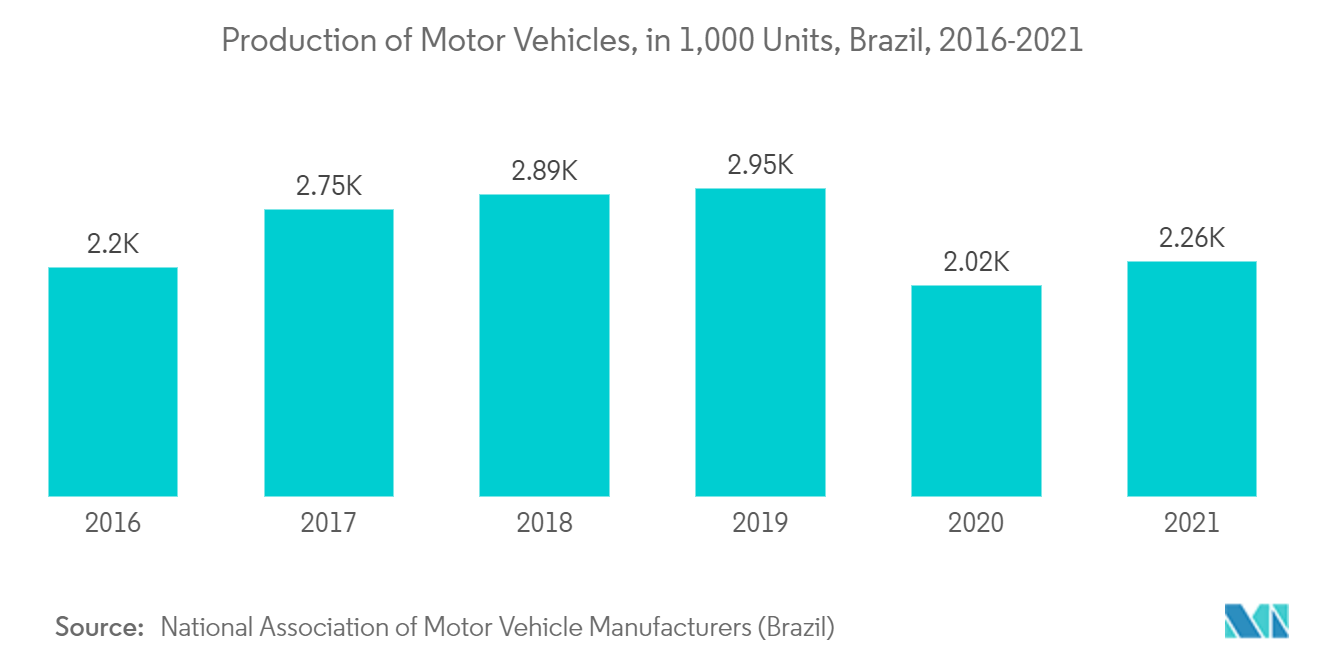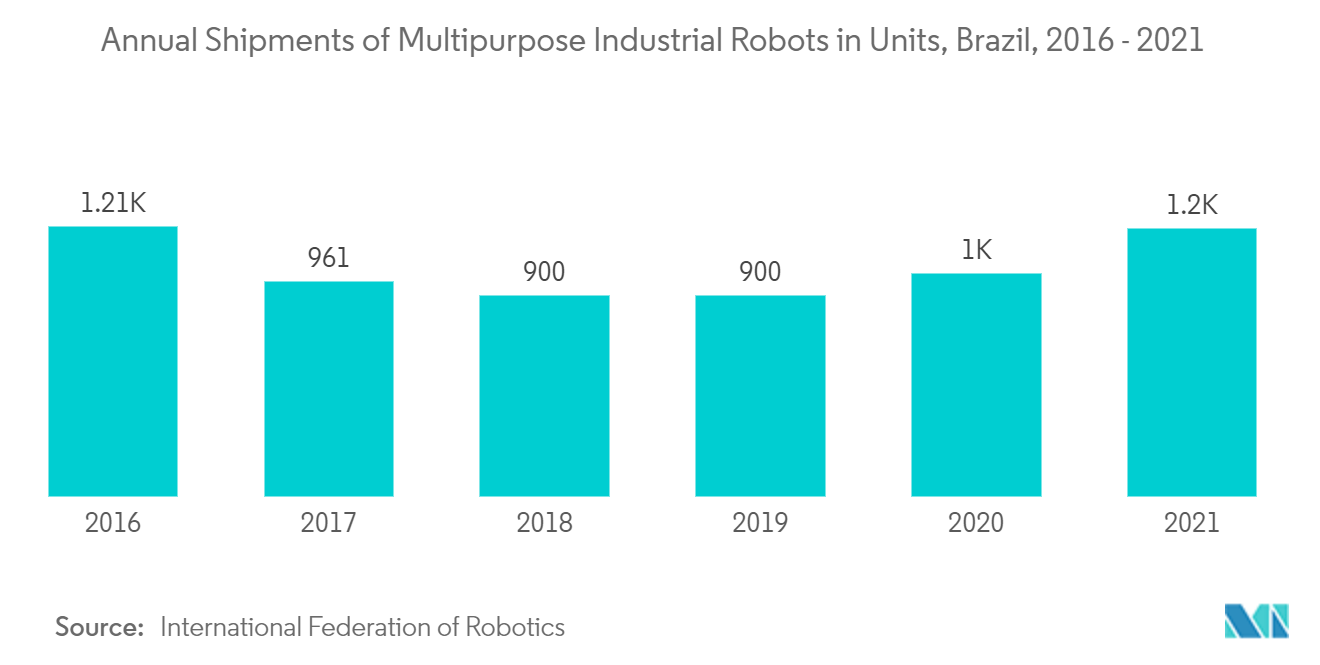Market Trends of Brazil Factory Automation and Industrial Controls Industry
This section covers the major market trends shaping the Brazil Factory Automation & Industrial Controls Market according to our research experts:
Automotive is One of the Major Segment Driving the Market
- There are currently over 8,500 hybrid and electric vehicles in use in Brazil. Electric vehicle sales will reach two million by 2030, according to the National Agency for Electric Energy (ANEEL). Furthermore, it is being supported by the government's initiative. For instance, in 2020, Brazil's constitution and the CCJ approved a bill prohibiting the purchase of new diesel and gasoline-powered cars in the country beginning in January 2030. As a result, only electric vehicles and those powered by bioenergy, such as ethanol, would be permitted in the country.
- Brazil is one of the prominent economies in the region and is home to the thriving automotive, iron, steel, gas, and oil industries. Automotive body assembly automation involves streamlining repetitive processes like welding, material handling, and assembling auto body components. According to the National Association of Motor Vehicle Manufacturers, In 2021, motor vehicles produced in Brazil were 2.256 million units, which will rise yearly. Hence automation in the automotive segment drives the market.
- In Brazil, the automotive industry is at the forefront of digital transformation. For instance, Volkswagen Brazil has announced a digital transformation strategy to transform the client and employee experience, with data analytics and artificial intelligence serving as critical pillars. With the new logistics and production layouts, the company hopes to increase efficiency by 15% to 20%.
- The Aerospace division is worth USD 12 billion in Mexico and Brazil. The usage of computer vision and AI can detect and reduce errors in aerospace component manufacturing facilities. As a result, the need for industrial controls in these areas is increasing.
- Furthermore, implementing industrial control systems in auto manufacturing plants enables companies to keep real-time track of productivity and quality via data generated by plant connectivity. Line supervisors and plant executives may be offered mitigating actions. Data analytics can open the door to predicting various outcomes, from part quality to the next machine breakdown.
- The automotive industry has used robots in its assembly lines for various manufacturing processes for the past 50 years. Automakers are currently investigating the use of robotics in additional operations. For these product lines, robots are more efficient, flexible, accurate, and dependable. This technology allows the automotive industry to continue to be one of the largest users of robots and to have one of the most automated supply chains in the world.

Sensors and Transmitter Expected to Observe a Significant Increase
- The sensors and transmitters section consists of image sensors, proximity sensors, flow sensors, pressure sensors, strain gauges, and others, which are used for both discrete automation and process automation industries.
- Industrial robots use many sensors to achieve good operation and control in industrial automation production processes. According to IFR (International Federation of Robotics), In 2021, The shipments of multipurpose industrial robots in Brazil were 1200 units. Sensors used for Industrial robots will increase and drive the market with the growing automation trend in factory space.
- Digital pressure sensor systems are becoming more popular because they provide low power consumption, pressure and temperature signals, magnetic noise immunity, less electrical noise, remote monitoring, and other features that align with the growing automation trend in the factory space.
- In addition, there has been a raising in industrial IoT (IIoT) systems, and sensors play an important role in such IIoT systems, which drive automation across all industries. Sensors that contribute to the automation process and are equipped with a digital interface, data collection, and condition monitoring feature sets are being developed by market vendors.
- For example, Yokogawa, a market leader, announced pressure and temperature sensors for its Sushi Sensor wireless industrial IoT (IIoT) solution in multiple markets. The sensor lineup allows equipment condition monitoring based on a wider variety of data. This, in turn, helps deduct equipment inspection man-hours and detect signs of equipment abnormalities early.
- Simultaneously, ABB introduced the PxS 100 series of pressure transmitters, which includes an HMI that rotates for visibility from any angle. The pressure sensors are built to withstand such harsh conditions, with IP66, IP67, IP68, and IP69K ratings for use in high humidity or dust environments.

